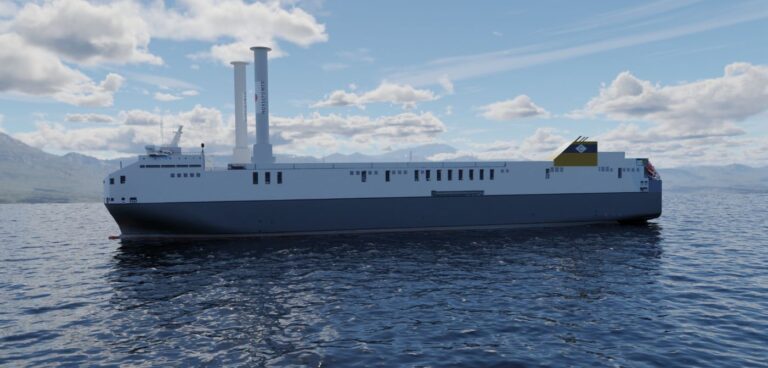Logistics company CLdN has signed an agreement with Norsepower for the installation of two tilting rotor sails on board one of the company’s ro-ro vessels.
The tilting rotor sails measuring 35 x 5m will be installed upon the MV Delphine, a cargo vessel with a capacity of 8,000 lane meters. Depending on the ship’s route, the installation is estimated to achieve a fuel and carbon emission reduction of between 7% and 10%.
The technology is a modernized version of the Flettner rotor, a spinning cylinder that uses the Magnus effect to harness wind power for propulsion. Norsepower’s technology is fully automated, which enables the system to detect when wind levels are high enough to provide fuel and emission savings. The MV Delphine will be the third vessel fitted with the tilting Rotor Sail solution.
At present, preparations for the installation are underway and the fitting of the Rotor Sails is expected to be complete by December 2022. The ship serves routes between the UK, Ireland and Europe and is said to be the largest short sea ro-ro in the world.
“Seeing the interest grow in our tilting Rotor Sail design demonstrates how the industry is looking for proven, flexible solutions to lower greenhouse gas emissions and reduce fuel costs across a range of vessel sizes and operations,” commented Tuomas Riski, CEO, Norsepower.
“Norsepower’s Rotor Sail installation on the MV Delphine demonstrates how the use of clean technology can modernize and evolve the performance of fleets’ younger vessels to manage emissions and help to increase asset value. With fuel becoming increasingly expensive, making savings will also have a huge impact on commercial success.”
“By investing in technologically advanced ships and terminals, CLdN enables its customers to improve their carbon footprint and support them at the same time in making their supply chains more efficient and robust,” said Gary Walker, COO Shipping, CLdN. “This demand for cleaner shipping is growing and we are committed to making measurable progress.”



